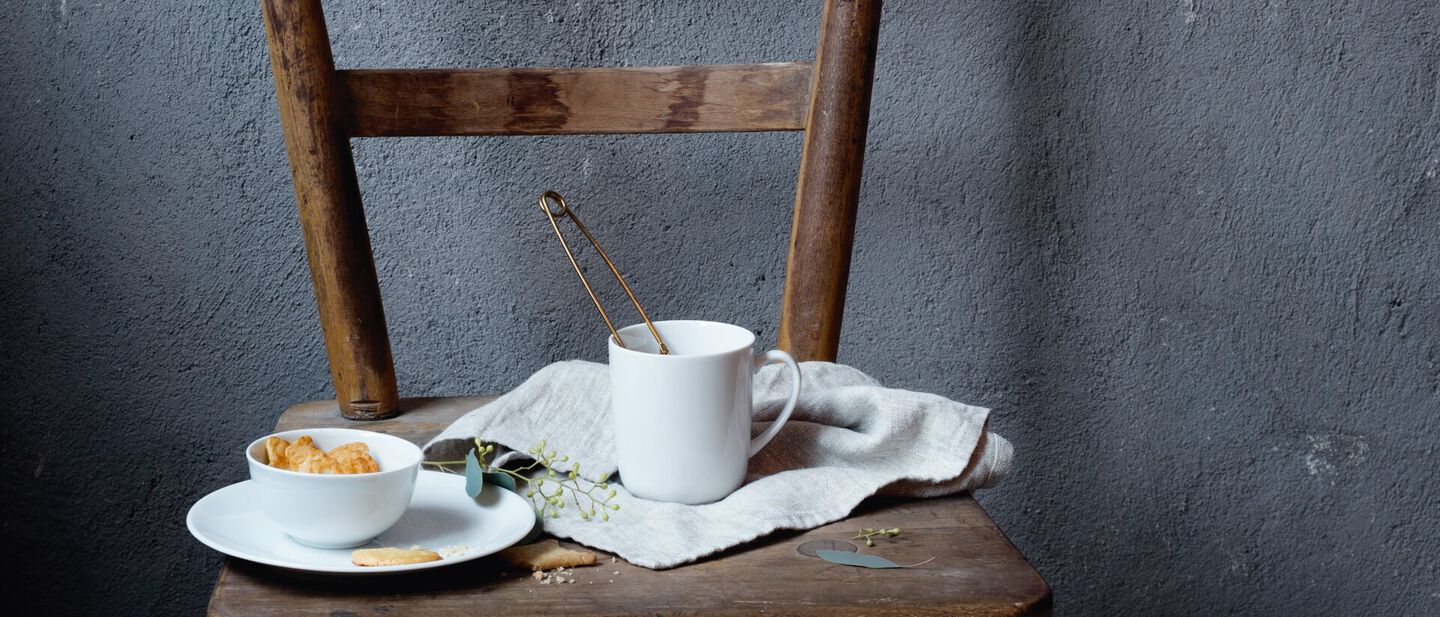
The History & Story of Arzberg
Find out more about the exciting story behind Arzberg and get to know its makers, their ideas and inventive spirit, which at the time demonstrated visionary foresight in terms of function and design.
Find out more about the exciting story behind Arzberg and get to know its makers, their ideas and inventive spirit, which at the time demonstrated visionary foresight in terms of function and design.
The Queen is not amused: German products becoming increasingly competitive. So Great Britain passes the “Merchandise Mark Act” which means that products from Germany must henceforth bear the description “Made in Germany” – in the hope that people will avoid them. But what is conceived as a warning very soon becomes a significant seal of quality. The Arzberg brand’s own “Made in Germany” history also began around this time. The year was 1887.
“If you’re such and expert on what a good terrine should look like, then go and make one,” Fritz Kreikemeier, director of the Arzberg porcelain factory, challenges the young graduate engineer Hermann Gretsch. Gretsch has criticised the fact that none of the terrines on the market allows the last remnants of food to be ladled out, never mind having an attractive shape. Gretsch goes off and designs. And the result is convincing. The Form 1382 marks the start of the Frankish porcelain manufacturer’s rise to become a successful frontrunner of modern and functional everyday porcelain. This was in 1931.
The term “designer” doesn’t yet exist in the 60s. But there is talk of the work being created by talented craftsmen with a particular feel for aesthetic styling. Many are striving to achieve good form. Heinrich Löffelhardt succeeds. His Form 2000 is a design which – according to Löffelhardt’s own artistic demands – “is such that it’s worth reproducing a thousand times over”. The Form 2000 becomes a bestseller. At the same time, the Museum of Modern Art in New York takes note of the design work coming out of the house of Arzberg, and includes the Form 1382, created by Löffelhardts’s predecessor Gretsch, into its permanent exhibition. Arzberg is heading to become the international design brand for porcelain. The year is 1954.
There’s no need to turn over the porcelain in the federal chancellery and look underneath to see who it was made by – only Arzberg is authorised to produce the crockery with its golden edging and vignette of Germany’s coat of arms, the federal eagle: at the end of the sixties, the Frankish porcelain producer provided the federal chancellery with a special edition of the Heinrich Löffelhardt Form 2000. To mark Löffelhardt’s100th birthday, the federal chancellery was presented with an exclusive and specially created set of tableware and some new items. This was in 2001.
There’s a saying in Germany that breaking lots of pots heralds good fortune. The German porcelain industry has by now long been living on the economic miracle, and securing its international reputation over the decades by producing high quality and discerning design. With reunification and globalisation – meaning cheaper imports from Eastern Europe and Asia – the porcelain market is shattered. And then put back together again: Arzberg, as part of Hutschenreuther AG, is integrated with Winterling AG. SKV-Porzellan-Union then acquires this design brand which is steeped in tradition. Helmut Sättler, Arzber’s managing director since 1997, and the internationally renowned designer Peter Schmidt, later acquire the shares in Arzberg-Porzellan GmbH. This was in 2003.
Eat at Kolja Kleeberg’s gourmet restaurant the “Vau” in Berlin and you’ll soon start counting. Because this top chef’s recipe for success is “Never present more than three things on the plate”. Work only with the essence – but then to perfection. And this creative gourmet makes no exception when it comes to tableware: he serves his food on award-winning Form 2006 porcelain by international top designers Peter Schmidt. Such creativity sees Arzberg rediscover the value of the essence. This was 2006.
Most creatives prefer not to burden themselves with excessive decoration. They seek authentic beauty – both in their work and in their own life. So it’s hardly surprising that many designers, architects and photographers so often serve their food on Arzberg porcelain. In their circles, Arzberg forms a kind of cult: “Because the brand stands for the interplay between interesting design and functionality, which as a consumer you wouldn’t want to do without – and not least because it’s something you can identify with” as head designer Heike Philipp puts it. And porcelain expert Helmut Sättler is quite clear: “Arzberg isn’t just about selling porcelain. It’s about history, design and quality. Porcelain is not simply an everyday item for the dinner table – it’s an expression of style, indulgence and joy in setting a table.” Arzberg is the brand in porcelain design. Genuine and true. Relative to life.

Browse Rosenthal.com using the latest version of Microsoft Edge, Chrome, Mozilla Firefox or Safari and prepare to dive into an extraordinary beauty experience.
Thank you for signing up, we''ll let you know when this product is back in stock.
Product is already in notification list, we will let you know via email once product is back in stock. Thanks.
The product you have selected is not available at the moment. If you leave us your email address,we will notify you as soon as the product becomes available again.
Thanks for contacting us. We will do our best to meet your requests as soon as possible.
5% Coupon for your newsletter registration1